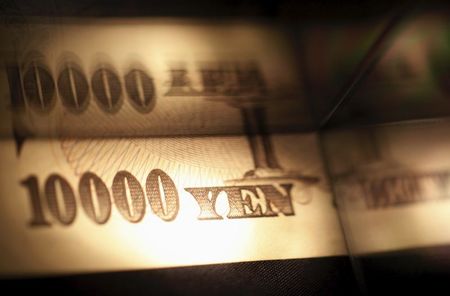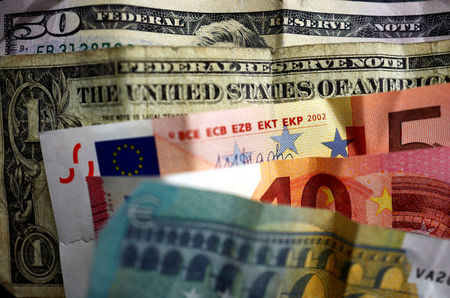
Investing.com– Most Asian currencies moved little on Wednesday as the dollar steadied with focus squarely on the upcoming presidential election and a string of key economic readings.
The Japanese yen also traded sideways after sinking to three-month lows, with focus turning to the conclusion of a Bank of Japan meeting on Thursday.
Regional currencies were nursing steep losses in recent weeks as traders turned increasingly risk-averse in anticipation of a tight U.S. presidential race.
A string of key U.S. economic readings are also due this week, coming before a Federal Reserve meeting where the central bank is widely expected to cut rates by a smaller 25 basis points.
The dollar index and dollar index futures steadied in Asian trade after hitting three-month highs earlier this week.
Japanese yen fragile as BOJ meeting looms
The Japanese yen was flat on Wednesday, with the USDJPY pair hovering around 153 yen after nearly reaching 154 yen in overnight trade.
Weakness in the yen came before the conclusion of a BOJ meeting on Thursday, where the central bank is widely expected to leave rates unchanged.
Heightened political uncertainty in Japan is expected to cloud the BOJ’s plans to raise rates further after two hikes earlier this year.
Japan’s ruling coalition, led by the Liberal Democratic Party, lost its parliamentary majority in a recent general election, presenting a fractured outlook for Japanese politics.
This uncertainty is expected to push the BOJ into adopting a more cautious approach towards higher rates, while the central bank is also expected to face increased political resistance towards increasing interest rates.
The yen- which was already nursing losses through October- was battered further by this notion.
Chinese yuan softens with PMIs, stimulus in focus
The Chinese yuan weakened slightly on Wednesday, with the USDCNY pair rising 0.1% and remaining close to two-month highs.
Focus this week was on purchasing managers index data from the country, which comes at the heels of several new stimulus measures from Beijing that were rolled out through October.
Focus is also on a meeting of China’s National People’s Congress in early-November, which is expected to offer more cues on the government’s plan to increase fiscal spending.
Broader Asian currencies moved in a flat-to-low range as traders remained broadly risk-averse. The Australian dollar’s AUDUSD pair fell 0.3% following mixed consumer inflation data that showed headline inflation fell in the third quarter, but underlying inflation remained sticky.
The South Korean won’s USDKRW pair was flat, while the Singapore dollar’s USDSGD pair rose 0.1%.
The Indian rupee’s USDINR pair was flat but remained close to record highs above 84 rupees.
This post is originally published on INVESTING.




